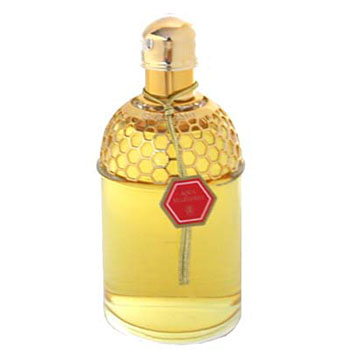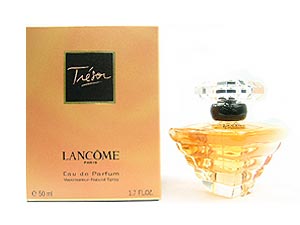Coming Clean
Pauline Kael, I've read, never saw a movie a second time. As she was watching a movie, she was making notes and passing judgement, and she didn't like to second-guess herself, and seeing a movie again might have forced her to re-evaluate her original thoughts. This, beyond a doubt, is a woman who didn't like to be contradicted, even by herself. Maybe especially by herself.
Not me, though. I'll re-think what I've written, and if I change my mind, or if i think I'm wrong, I'll say so. I've been re-reading my blog, and here are a few things I've written over the last year that I've changed my mind about, or flat-out wish I hadn't written.
1. In March I said of Bulgari's Blu Pour Homme, "I like [it] well enough, but I don't love it." Not any more. That detergent note is just too much. It bugs the hell out of me. Has my nose changed? I used to not mind it, but now it dominates the scent to such an extent that I can't wear it any more. No matter: I have a thousand other things to wear.
2. In May I wrote about a bunch of things I smelled on a trip to Montréal and Ottawa, and something's been bothering me ever since. I sampled, and dismissed, four Serge Lutens scents, without even having tried them on my skin. I didn't just sniff the caps, mind you: I sprayed them, tested them, gave them a little while to develop on the blotters. But you honestly can't tell how something is going to smell without actually putting on your skin: otherwise, it's like deciding that you do or don't like a movie based on having seen thirty seconds of footage projected on a bedsheet hung on a clothesline. I know this, and yet I was trying to be thorough and write about everything I'd tried that was interesting but didn't seem to work. One of these days I'll get to sample the Lutens scents for real, and maybe then I'll write about them for real. The guy is clearly an artist, and I'm sure I just need to give his work a proper chance. (I stand by what I wrote about Youth Dew Amber Nude, though. It just doesn't work.)
3. In June I wrote about Comptoir Sud Pacifique's Matin Calin, which I wasn't enormously fond of at the time: all right, I said, but I can live without it. I wore it some more--I completely used up the large sample I had--and now I have to say that I like it a lot better than I did. It still doesn't have a lot of lasting power, and it's still not a desperate necessity, but it really is lovely, soft and comforting. Ordinarily I would have caved and bought some at Shoppers Drug Mart, but they stopped carrying the line about a month ago, the bastards, so if I want to buy CSP, I'm out o' luck. Probably just as well: one of my New Year's resolutions is that I am absolutely not buying any more scents until I go to Europe in September.
4. My first posting for July was about Boss in Motion, and now I would like to officially state that I'm as sick of it as I became of its progenitor, Clinique Happy for Men. Don't know why. I just am. I also wrote about Cartier's Baiser du Dragon, and nothing I wrote is wrong, exactly, but I would like to note that, having bought a bottle of the stuff rather than relying on a dwindling sample and therefore not being afraid to wear it with a little more abandon, I've discovered that the patchouli note is much stronger than I realized. The scent is still laden with sugared almonds, but it's rather tougher than I'd originally thought, and even more masculine. It's wonderful.
5. I changed my mind about August's posting regarding Demeter Dirt. It's gross. I wore it a few times and it just didn't work on me any more. I emptied out the (nice, simple, refillable) bottle, scrubbed the hell out of it with unscented soap, ran some rubbing alcohol through it, and filled it with Eau D'Hermes, a much worthier occupant. I still like all the other Demeters I've ever written about, though.
6. I was a little, but only a little, dismissive of Boucheron's Trouble, I think. It really does smell of root beer and ambergris, but it's a very complex and interesting scent overall. I like it enough that I bought some soap (more about that very soon) and a box of something called Scented Precious Stones, which is kind of a crystalline potpourri that smells exactly like Trouble and therefore is wonderful if you aren't wearing the scent but want to smell it anyway. I keep it in a closed glass jar so it doesn't stink up the whole apartment.
That's it. It isn't a New Year's Eve countdown or anything, but I had to get all that off my chest. And now it's done and I can start the new year afresh. I still have many, many things in my collection: old favourites (the aforementioned Eau D'Hermes, Alfred Sung's Encore), new stuff I haven't even opened yet (lots of La Maison de la Vanille, Dolce & Gabbana, Calvin Klein, Ferragamo, and Perry Ellis miniatures), at least a hundred samples (I am going to write about Daytona 500 and Golden Goddess one of these days): there's no shortage of scents out there, and as long as they keep cranking out new ones, and I keep trying them, there'll never be a shortage of things to write about.
Not me, though. I'll re-think what I've written, and if I change my mind, or if i think I'm wrong, I'll say so. I've been re-reading my blog, and here are a few things I've written over the last year that I've changed my mind about, or flat-out wish I hadn't written.
1. In March I said of Bulgari's Blu Pour Homme, "I like [it] well enough, but I don't love it." Not any more. That detergent note is just too much. It bugs the hell out of me. Has my nose changed? I used to not mind it, but now it dominates the scent to such an extent that I can't wear it any more. No matter: I have a thousand other things to wear.
2. In May I wrote about a bunch of things I smelled on a trip to Montréal and Ottawa, and something's been bothering me ever since. I sampled, and dismissed, four Serge Lutens scents, without even having tried them on my skin. I didn't just sniff the caps, mind you: I sprayed them, tested them, gave them a little while to develop on the blotters. But you honestly can't tell how something is going to smell without actually putting on your skin: otherwise, it's like deciding that you do or don't like a movie based on having seen thirty seconds of footage projected on a bedsheet hung on a clothesline. I know this, and yet I was trying to be thorough and write about everything I'd tried that was interesting but didn't seem to work. One of these days I'll get to sample the Lutens scents for real, and maybe then I'll write about them for real. The guy is clearly an artist, and I'm sure I just need to give his work a proper chance. (I stand by what I wrote about Youth Dew Amber Nude, though. It just doesn't work.)
3. In June I wrote about Comptoir Sud Pacifique's Matin Calin, which I wasn't enormously fond of at the time: all right, I said, but I can live without it. I wore it some more--I completely used up the large sample I had--and now I have to say that I like it a lot better than I did. It still doesn't have a lot of lasting power, and it's still not a desperate necessity, but it really is lovely, soft and comforting. Ordinarily I would have caved and bought some at Shoppers Drug Mart, but they stopped carrying the line about a month ago, the bastards, so if I want to buy CSP, I'm out o' luck. Probably just as well: one of my New Year's resolutions is that I am absolutely not buying any more scents until I go to Europe in September.
4. My first posting for July was about Boss in Motion, and now I would like to officially state that I'm as sick of it as I became of its progenitor, Clinique Happy for Men. Don't know why. I just am. I also wrote about Cartier's Baiser du Dragon, and nothing I wrote is wrong, exactly, but I would like to note that, having bought a bottle of the stuff rather than relying on a dwindling sample and therefore not being afraid to wear it with a little more abandon, I've discovered that the patchouli note is much stronger than I realized. The scent is still laden with sugared almonds, but it's rather tougher than I'd originally thought, and even more masculine. It's wonderful.
5. I changed my mind about August's posting regarding Demeter Dirt. It's gross. I wore it a few times and it just didn't work on me any more. I emptied out the (nice, simple, refillable) bottle, scrubbed the hell out of it with unscented soap, ran some rubbing alcohol through it, and filled it with Eau D'Hermes, a much worthier occupant. I still like all the other Demeters I've ever written about, though.
6. I was a little, but only a little, dismissive of Boucheron's Trouble, I think. It really does smell of root beer and ambergris, but it's a very complex and interesting scent overall. I like it enough that I bought some soap (more about that very soon) and a box of something called Scented Precious Stones, which is kind of a crystalline potpourri that smells exactly like Trouble and therefore is wonderful if you aren't wearing the scent but want to smell it anyway. I keep it in a closed glass jar so it doesn't stink up the whole apartment.
That's it. It isn't a New Year's Eve countdown or anything, but I had to get all that off my chest. And now it's done and I can start the new year afresh. I still have many, many things in my collection: old favourites (the aforementioned Eau D'Hermes, Alfred Sung's Encore), new stuff I haven't even opened yet (lots of La Maison de la Vanille, Dolce & Gabbana, Calvin Klein, Ferragamo, and Perry Ellis miniatures), at least a hundred samples (I am going to write about Daytona 500 and Golden Goddess one of these days): there's no shortage of scents out there, and as long as they keep cranking out new ones, and I keep trying them, there'll never be a shortage of things to write about.









